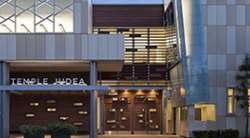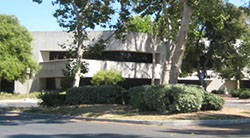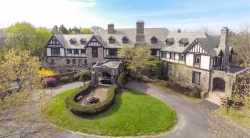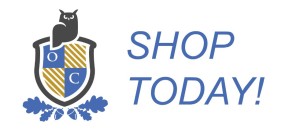Literature
The concept of cyclic patterns of change was chosen as the unifying theme for this unit. Selected literary works deal with cycles in nature, knowledge, history, and human life. Students in grades 4–6 are introduced to some of the important approaches and ideas of literary criticism. Students are encouraged to use journals, literature webs, essays, and visual projects to organize and express their ideas about various literary selections. Works studied in the unit includeMy Daniel by Conrad, “The Helpful Badger” by Lawrence Yep, and poetry by Dickinson, Sandburg, Angelou, and Shakespeare.
Autobiographies - In this unit, students in grades 5–6 study the concept of change by reading autobiographies of writers and by looking at change in the lives of writers and other artists. As they examine life stories and self-portraits, they study literature and examine works of art from various cultures. In order to gain insight into the development of talent, students are encouraged to explore their own identities as talented learners through discussions, research, oral presentations, and reflective writing. Autobiographical writings from authors including Beverly Cleary, Eloise Greenfield, Isaac Singer, and Lawrence Yep are explored.
Reading: Jacob’s Ladder is a learning journey for students which begins with targeted readings from fables, myths and nonfiction sources and moves through an inquiry process from basic understanding to critical analyses of the texts read. There are five levels available that are targeted to students in grades 2 to 9, but can be used at different grade levels depending on student ability. The units are designed to enhance reading comprehension. Tasks have been organized by skill ladders with questions and activities within each. Ladder rungs are organized to increase complexity in intellectual demand. The skill ladders in Jacob's Ladder correspond with the higher level, critical thinking skills targeted in the William & Mary language arts units


Mathematics
Polygons Galore! is a mathematics unit for high-ability learners in grades 3–5 focusing on 2-D and 3-D components of geometry by exploring polygons and polyhedra and their properties. The van Hiele levels of geometric understanding provide conceptual underpinnings for unitactivities. The unit consists of nine lessons that include student discovery of properties of polygons and polyhedra, investigations for finding areas of triangles and quadrilaterals, study of the Platonic solids, and real-world applications of polygons and polyhedra.
Beyond Base Ten investigates the concept of place value and the representation of numbers by using place value and non-place-value systems. Number bases other than Base Ten are featured, especially through historical contexts of early civilizations that developed number systems different from the one we use today.
Science
Acid - This unit presents the structure of systems through chemistry, ecological habitats, and transportation. The unit poses an ill-structured problem that leads students in grades 4–6 into an interdisciplinary inquiry about the structure and interaction of several systems, centering around the study of an acid spill on a local highway.
Electricity - This unit provides a creative and interdisciplinary approach to introducing students in grades 4–6 to electricity. In this simulated activity, a large recreational complex is being built in the middle of a city, and the students’ role is to plan the site’s electrical needs, as well as create additional backup plans. This real-world problem requires students to analyze the situation, determine what type of research is needed, conduct experiments, and evaluate solutions.


History
Building a New System: Colonial America 1607–1763
This unit for students in grades 4–5 begins with an in-depth study of the interrelationships between the Chesapeake Bay System and both the Native Americans and the early English colonists in Virginia. The unit then turns to an exploration of the economic, social, and political systems of early America across the colonies, comparing and contrasting lifestyles of different groups in different regions. Frameworks for reasoning and document analysis support students in their explorations of this period of history.
The World Turned Upside Down: The American Revolution
Intensive document analysis and exploration of the concept of cause and effect form the foundation of this unit exploring the Revolutionary Period in American history. For students in grades 4–5, the unit explores the chronology and major events leading up to and during the Revolutionary War and uses primary sources to demonstrate the social and political context. The contributions of particular individuals and groups to the history of the time are also highlighted.
A House Divided? The Civil War: Its Causes and Effects
The concept of cause and effect serves as a central organizing theme of this unit, which explores the events and perspectives leading to the American Civil War and the chronology and context of the war itself. Using primary source documents as a major resource, students in grades 5–6 investigate the social, political, and economic influences that were significant in this period of history. In addition, the unit focuses on particular individuals and groups and their contributions and responses to the events of the time.
Social and Emotional
TOOLBOX™ is a Kindergarten through 6th grade program that supports children in understanding and managing their own emotional, social, and academic success. The foundation of TOOLBOX is 12 human capacities that reside within all of us. Through its simple and profound metaphor of Tools, TOOLBOX brings forward a set of skills and practices that help students access their own inner resilience at any time, in any context.
Children learn 12 simple yet powerful Tools. With practice, these Tools become valuable personal skills: self-awareness, self-management, and relationship-building which, in turn, foster responsible decision-making. Because the techniques are simple and the language is shared, children adopt the Tools and master them quickly. TOOLBOX begins with a teacher providing instruction on how to use the Tools. Through modeling and daily classroom practices, the teacher subsequently supports his/her students to use the Tools to build self-knowledge and self-trust. Schools note rapid improvements in communication, civility, and conflict resolution in the classroom, on the playground, and across the entire school community. Providing parents and caregivers with the Tools and information on how to incorporate the practices into the home setting allows for continuity and reinforcement of skills for students.


Foreign Language/Dual Immersion
At Oak Crest Academy, we recognize that the ability to speak more than one language considerably heightens one’s ability to learn, lead, and love. Every day, our nurturing educators teach grade-level curriculum in Mandarin and English, to children who are as diverse as they are curious about the physical world they live in.
Dual language immersion involves the instruction of academic subject areas through a target language, such as Mandarin, for at least 50% of the school day, and English for the other part of the day. Immersion teachers speak only the target language and use a variety of techniques to ensure that the students understand the concepts and directions. In K/1 our students are exposed to Mandarin in language class, as well as other classes throughout the day.
Physical Education
Daily activity and nutritional choices are central to balanced, healthy lives. Not only do students have formal PE classes twice a week, teachers incorporate movement into their lessons.


Project Based/Co-Curricular
During this time, classes are focused on class-wide or individual projects as well as offering co-curricular options like computer programming, arts, theater, music, Odyssey of the Mind, gardening, cooking, study hall and more.
*Please note that units fluctuate each year and every unit is not taught each year.
Is a Gifted Program Right For Your Child?
Contact Us Today to Take the Gifted Child School Readiness Quiz
Identify goals, strengths and important facts about gifted child education so you can make an informed decision for your family. Contact Us Today.
Upper 4/5 Daily Schedule
8:30-9:00 AM
Morning Connection/Social & Emotional Learning
9:00-9:45 AM
Math
9:45-10:30 AM
ELA/History Rotation
10:30-10:45 AM
Break
10:45-11:15 AM
Foreign Language/Cultural Exploration/Healthy Minds Healthy Body Rotation
11:15-12:00 PM
Science/Odyssey of the Mind Rotation
12:00-12:45 PM
Lunch
12:45-1:45 PM
PE TTH/Co-Curricular Rotation
1:45-3:00 PM
Innovation/Projects






